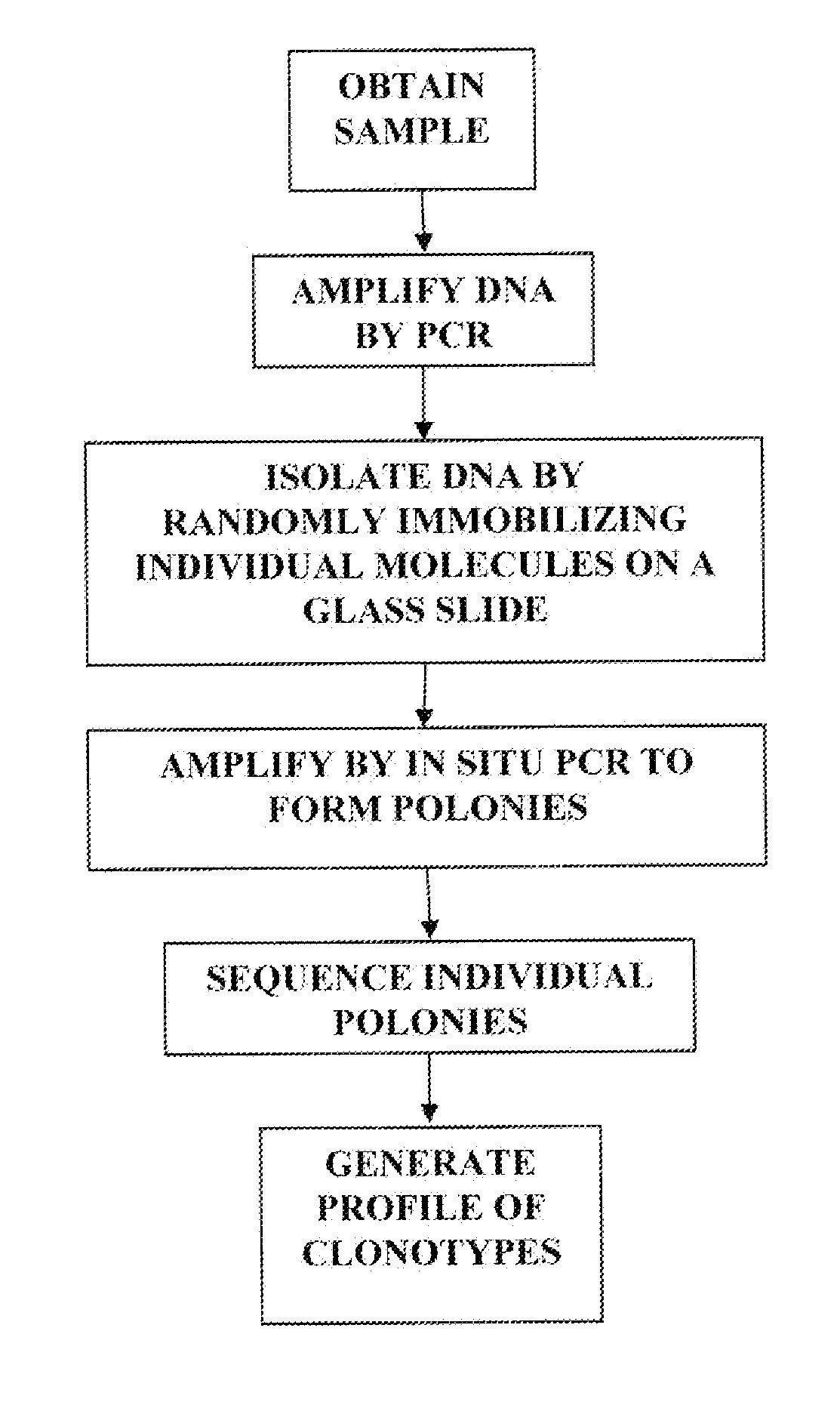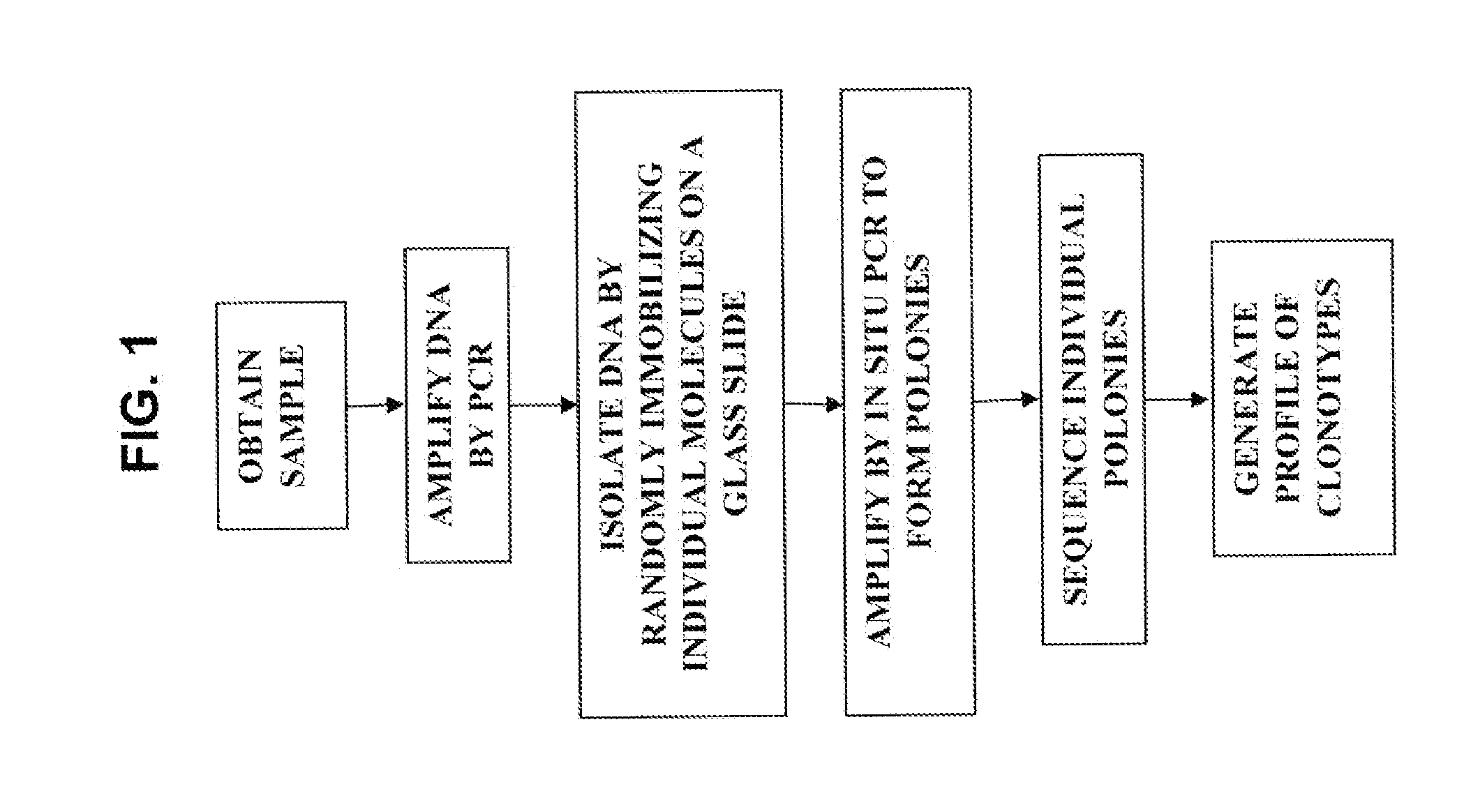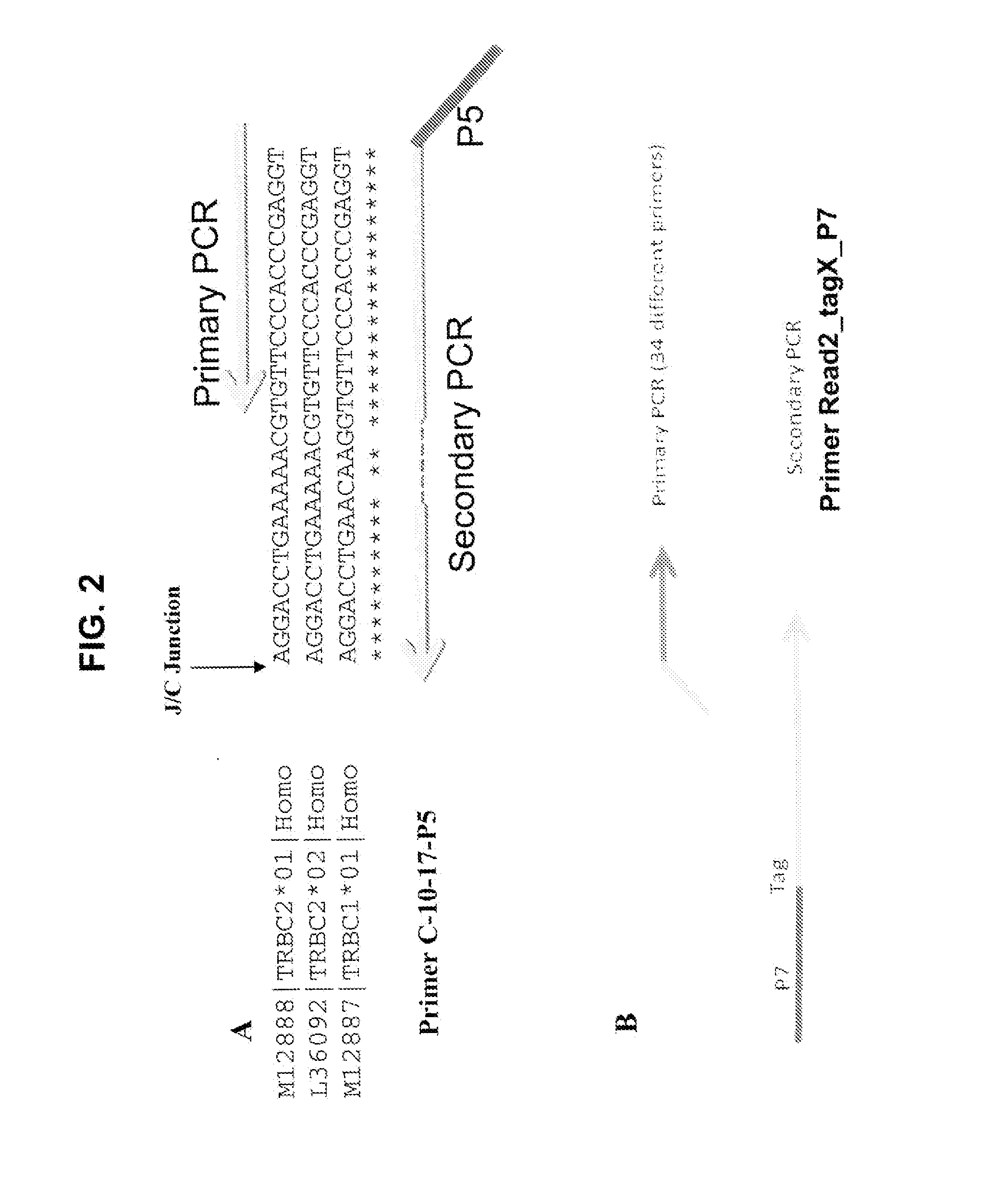Methods of monitoring conditions by sequence analysis
a sequence analysis and condition technology, applied in the field of immunodeficiency syndrome, to achieve the effect of maximizing the correlation between clinical data
- Summary
- Abstract
- Description
- Claims
- Application Information
AI Technical Summary
Benefits of technology
Problems solved by technology
Method used
Image
Examples
example 1
Determining the Sequence of Recombined DNA in a Subject with an Autoimmune Disease
[0282]A blood sample is taken from a patient with an autoimmune disease. CD4+ and CD8+ cells are isolated from the blood sample using antibody-coated magnetic beads. PCR is used to amplify the full variable region of the T cell receptor β gene. The amplified fragments are subcloned into vectors and transformed in bacteria to isolate the DNA fragments. The bacteria are grown to amplify the DNA, and dideoxy sequencing is used to sequence the variable regions of the T cell receptor β gene to identify the clonotypes. The sequencing information is used to generate a clonotype profile for the patient. A similar method is shown in FIG. 1.
example 2
Determining the State of an Autoimmune Disease
[0283]A sample of cerebral spinal fluid (CSF) and blood is taken from a patient with an episode peak of multiple sclerosis. CD4+ cells are isolated from the CSF and blood, and the CDR3 of the T cell receptor β gene is amplified by PCR. The amplified fragments are subcloned into vectors and transformed in bacteria to isolate the DNA fragments. The bacteria are grown to amplify the DNA, and dideoxy sequencing is used to sequence the variable regions of the T cell receptor β gene to identify the clonotypes. The sequencing information is used to generate a clonotype profile for the patient.
[0284]Another blood sample is taken when the patient is at a relatively inactive state of multiple sclerosis. The same procedure as above is repeated to generate a clonotype profile. Pathological clonotypes are identified as those that are high at the peak episode and went down significantly at the inactive state. Another blood sample is taken from the pat...
example 3
TCR / β Repertoire Analysis
Amplification and Sequencing Strategy
[0285]To study amplification of the TCR repertoire, TCRβ chains will be analyzed. The analysis will include amplification, sequencing, and analyzing the TCRβ sequences. One primer AGCGACCTCGGGTGGGAACA is complementary to a common sequence in Cβ1 and Cβ2, and there are 34 V primers (Table 1) capable of amplifying all 48 V segments. Cβ1 or Cβ2 differ from each other at position 10 and 14 from the J / C junction. The primer for Cβ1 and Cβ2 will end at position 16 bp and should have no preference for Cβ1 or Cβ2.
[0286]The 34 V primers are modified from an original set of primers published by the BIOMED-2 group in order to amplify all 48 V segments and all their published alleles as defined by the international ImMunoGeneTics information system (http: / / imgt.cines.fr / ).
[0287]The BIOMED-2 primers have been used in multiplex in order to identify clonality in lymphoproliferative diseases.
TABLE 1Primer sequences complementary to the d...
PUM
| Property | Measurement | Unit |
|---|---|---|
| diameter | aaaaa | aaaaa |
| real time | aaaaa | aaaaa |
| nucleic acid sequencing | aaaaa | aaaaa |
Abstract
Description
Claims
Application Information
 Login to View More
Login to View More - R&D
- Intellectual Property
- Life Sciences
- Materials
- Tech Scout
- Unparalleled Data Quality
- Higher Quality Content
- 60% Fewer Hallucinations
Browse by: Latest US Patents, China's latest patents, Technical Efficacy Thesaurus, Application Domain, Technology Topic, Popular Technical Reports.
© 2025 PatSnap. All rights reserved.Legal|Privacy policy|Modern Slavery Act Transparency Statement|Sitemap|About US| Contact US: help@patsnap.com



